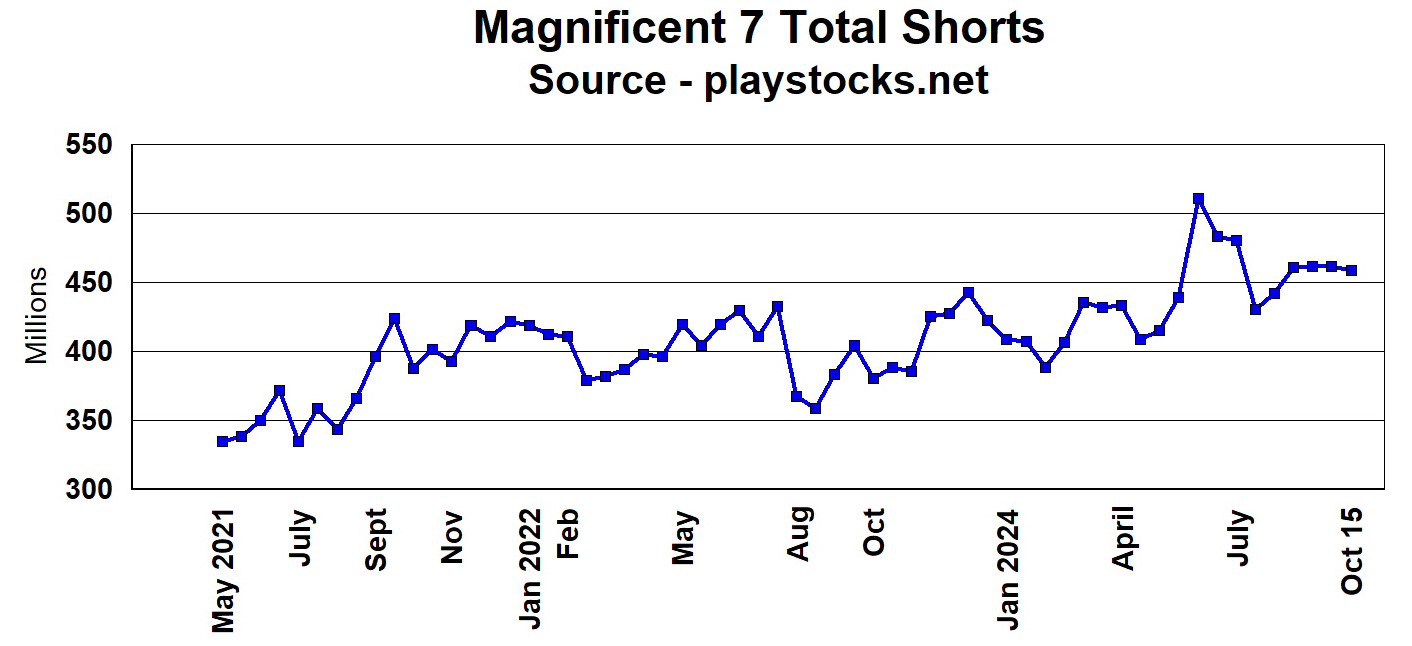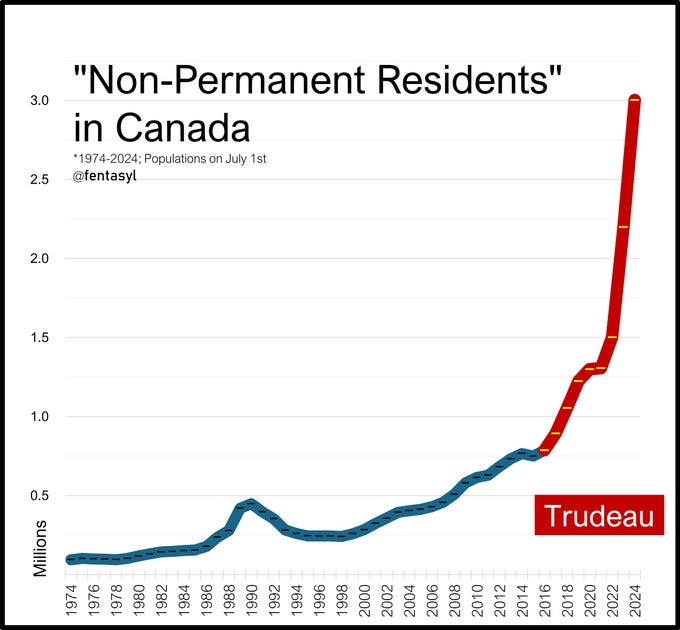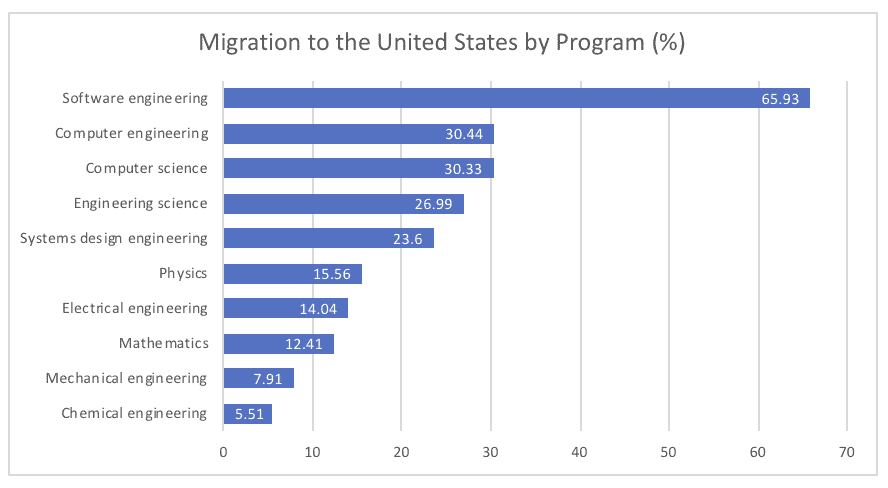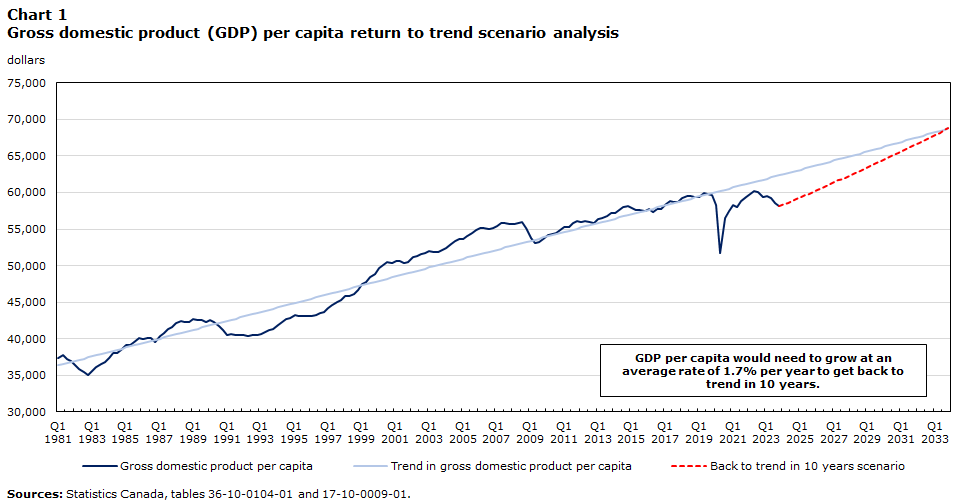Mag 7 Shorts < Earnings, Gold/Bitcoin, Election fraud, Trudeau's Migrant Craze
According to FactSet, four Magnificent 7 stocks are projected to be among the top 10 contributors to S&P 500 earnings growth for Q3 - Nvidia, Alphabet, Amazon and Meta. Interestingly, according to the latest Seeking Alpha's Wall Street Breakfast survey, most respondents see Meta as the biggest beneficiary of earnings. The short position went down but not very much. This is at Oct 15th and will be interesting to see the next short report on Oct. 31 to see if there was any significant reduction.
ComeX gold hit a new record today and Bitcoin made 6 month highs!
The Trudeau government and Biden/Harris administration have been pursuing a policy of open borders with massive immigration, refugees and illegals. It has been very disruptive on many communities causing housing, schooling, medical care shortages and adding to the inflation problem. It does not make any sense or have any sound objective. The only purpose has to be gaining election votes for Liberals and Democrats as that is the way the majority of these people vote. I suppose in part of gratitude for bringing them in with high monetary support and they are obvious targets of ballot harvesting.
In the U.S. no I.D. is required to vote. I am aware of a Canadian who crossed the border and voted in the U.S. election. In Canada you need two pieces of ID that show your residence, like a library card, student card, drivers license, passport, cell phone bill, a utility bill, credit card or bank statement etc. If you don't have that, somebody that does can vouch in writing for you at election time. You can verify the requirements at the Election Canada web site.
In either country you are suppose to be a citizen but it is an unwritten law and not enforced. Canada clearly states no ID to prove citizenship is required, as the purpose is to prove you live in the riding you are voting at. In the U.S. rules differ by state, but with no voter I.D. it is easy to get around the proof of citizenship.
In fact Lanco county Pennsylvania election commissioner held a press conference to announce they uncovered voter fraud. Duplicate handwriting on forms inconsistent signatures, bad addresses or driver licenses. 2,500 applications received at deadline with most the same handwriting and signatures that did not match. False ID, names did not match social security and also individuals verified they did not complete the registration. This was connected to a large scale canvasing program mostly at malls, sidewalks and parks. So far about 60% of applications were proven fraudulent. Two other counties are investigating the same type of fraud.
Good to see they caught this but it is just one county in probably thousands in the U.S. This is just one election county and there is almost 60 in Pennsylvania. This does prove that election fraud is very active and I wonder how many States and Counties are taking no action.
CNN reported that, a federal judge last Friday halted a Virginia program that purged the state’s voter rolls based on indications that a person might be a non citizen and ordered officials to restore the registrations of roughly 1,600 people who had been removed under the process.
The ruling, from US District Judge Patricia Tolliver Giles, an appointee of President Joe Biden, does not give non citizens the right to vote. Rather, Giles is siding with the Biden administration and others in finding that Virginia’s program violated a federal law that forbids systematic removals from the voter rolls 90 days before a federal election. However, Virginia has done this same thing every year. I saw news of the Biden Administration suing other districts of this exact same 90 day thing.
Basically this says that as long as you submit your fraudulent voter registration or ballot within 90 days of the election it will get through, including non citizens.
I got side tracked a bit on the non-citizens voting thing but it relates to the migration policy in both countries
Trudeau's Migration Scam Distorts Economy Too
Trudeau is the most unpopular Prime Minister in Canadian history. His own members of his parliament are calling for his resignation. So the Liberals and Trudeau had a caucus meeting.
Trudeau came out of that meeting and said the party was united and also announced the government will cut the number of permanent residents allowed into Canada over the next three years. Trudeau must have caved in a bit on his ludicrous migration policy to the caucus.
He said, Canada’s immigration targets will fall from 500,000 new permanent residents in both 2025 and 2026, instead being changed to 395,000 in 2025 and 380,000 in 2026. It will drop to 365,000 in 2027.
Prime Minister Justin Trudeau said at a press conference that while Canadians are “justifiably proud” of their immigration system, the federal government has a responsibility to ensure “that pride, that faith in immigration, is not undermined.”
He said Ottawa initially increased immigration after the COVID-19 pandemic when there was a labour shortage, but the economy had recovered and it was time to make adjustments. “We are acting today because in the tumultuous times as we emerged from the pandemic, between addressing labour needs and maintaining population growth, we didn’t get the balance quite right,” he told reporters on Parliament Hill on Oct. 24.
Saying something does not mean it will happen, especially from Trudeau and even if it does it is not enough and the legal immigration process is not where the problem is. There are 3 main categories that are the problem, refugees, illegals and non permanent on work or education permits. Under Trudeau non-permanent residents has jumped over 2 million, way more than immigration.
The international student program is another route to the goal of permanent residency, through education, appealing for hundreds of thousands of young people - many of them from India.
There was a dramatic increase of international students — more than 1.5 million study permits for post-secondary were granted from 2018 to 2023 — it is straining housing and health care.
International students, who after graduating are eligible for work permits to continue living legally in Canada, represent one major category of temporary residents. Another group is made up of workers who come at the invitation of specific employers, while the smallest cohort are migrants seeking asylum.
Stats Canada is slow with data but back in 2021 they reported overall, less than half of all international students remained in their province of study in the year after graduation (compared with 8 in 10 domestic students). Many of them may have left Canada. This rate decreased to 36% five years after graduation for international students, compared with about 75% for domestic students.
Canada is barely retaining 1/3 of these foreign students so all this education Canada is giving to foreign students is not benefiting Canada. Also domestic students leave Canada for the U.S., often referred to as brain drain.
The study, entitled ‘Reversing the Brain Drain: Where is Canadian STEM Talent Going?’, looked at graduates from 2015 and 2016 in 22 science, technology, engineering and mathematics (STEM) subjects. It focused on graduates from the University of Toronto, University of Waterloo and University of British Columbia. The alarming figures suggest Canada has a long way to go in reversing the flow of talent out of the country.
This is an old study but nothing has changed. From a 2023 article, in the IT sector, students obtain their education in Canada, where the quality of education is high, but costs are low and often subsidized by the government. After completing their education in Canada, they go to the U.S.
There are just not enough high paying tech jobs in Canada, as I say we are becoming 3rd world.
The average IT worker in Canada makes $100k CDN (or $74k USD). While that’s a higher salary than the average Canadian, it’s a fraction of what they stand to earn from their skills in America. Salaries in the Bay Area (145k USD), New York (133k USD) or Seattle (138k USD) are almost double. Even workers in lesser-known American tech-hubs make 50% more. I know of one colleague that had 2 kids graduate and they both moved to NY this summer, one going to Google and the other META.
I got a bit sidetracked on the Canadian education problem but in this country it is hard to get into any topic or sector that has not become a disaster.
As a result of education and work, nearly three million people living in Canada have some type of temporary immigration status, with 2.2 million arriving in just the past two years, according to government statistics. Temporary residents represent 6.8 percent of the country’s total population of 41.3 million, up from 3.5 percent in 2022.
This has to be drastically reduced more so than the legal immigration, in Trudeau's press conference.
And than there is the refugee problem. In 2023, Canada received a record 143,680 refugee claimants (a 126.8% increase from 2019).
These and illegals just land at airports and get Canada's generous support. They have also learned how lenient the country is on crime, so more of the less desirable s come in. The other problem is these people learn costs are very high, there are few jobs and housing so many turn to crime. This is another huge failure in Canada that would take many pages.
There is a lot of controversy into how much support $$ these migrants receive, usually more than are own citizens in need, so I dug into the numbers from ligate sources.
Refugee families in Canada receive $50,000 and more in government assistance per year are circulating on social media. The $50,000 is the maximum amount of cash aid that a refugee family could receive, but government sources stressed that this is not the norm.
A “start-up cost” payment is made to families to help purchase necessary clothing, furniture, linens, and other household needs like utility installation associated with settling in Canada. In Ontario, the payment totals range from $3,065 for a single adult with no dependants, to $8,970 for a couple with four dependants, plus $1,015 for every additional dependent. Families with school-aged children also receive a school start-up allowance of $150 per child.
Beyond the start-up assistance, refugee families receive monthly income support. The amounts vary by province, but looking at Ontario, a couple with four children is eligible for a basic needs allowance of $486 per month, a monthly $831 shelter allowance and a $30 communication allowance. A housing supplement of up to a maximum of $200 per month can be received if the family’s actual housing costs exceed the basic shelter allowance.
Examining the example in the first meme, a “family of four” who settles in Ottawa with two school age children will receive a start-up payment of $6960. That same family would receive a monthly basic needs allowance of $486, shelter allowance of $744 and $30 communication allowance. Assuming they qualify for the additional $200 in monthly housing supplement, this would add up to $17,502 in aid for one year. Transit in Ottawa costs $116.50 per month. In a family with two adults, this transportation allowance would come to $2,796 annually.
Added together, this family would receive $27,276 in cash aid in their first year in Canada. This falls well short of $50,000. Now that doesn't sound as so much but where costs and support really explode is for those that can't find housing and with the shortage in this country, this affects many.
Canada government announced $362.1 million in refugee housing for 2023/24 fiscal year. This is on top of $212 million previously allocated, a total of $574.1 million.
The government claims they have approximately 4,000 temporary rooms across Canada that are providing housing for over 7,300 asylum claimants.
By the government reported numbers - $574.1 / 7,300 = $78,643 per refugee per year. Average rental rates for 2 bedrooms are between $2,000 and $3,000 per month in Canada. That is about $36 per year on the top end. No surprise a government solution costs more than double. Now if you add in the other payments these government housed refugees receive it comes out around $100,000 per year.
To conclude there are two main economic factors affected here. The very large migrant numbers increase GDP considerably because they spend $$ on goods and services, even though a large part is government handout. This is why Canada shows GDP growth but if you look at GDP growth per capita it is shrinking and Canada has been in recession for almost 2 years. Here is a chart I used before to the end of 2023. You can see the decline and Canada is now well below pre pandemic levels and back to where we were in 2015. And it has continued to decline in 2024. No growth in 10 years is what you see in 3rd world countries. The red dotted line is a wish number, it is not go to happen with this current government.
Real gross domestic product (GDP) rose 0.5% in the second quarter of 2024 after advancing 0.4% in the first. Increases in government consumption expenditures supported the headline increase. Even little of that was the real economy. Government consumption expenditures rose 1.5% in the second quarter, the largest quarterly increase since early in the pandemic. Again out of control spending.
Real GDP per capita continued to trend lower in first half of 2024 as population increases, driven by temporary and permanent immigration, outpaced economic growth. Per capita growth edged down 0.2% in the first quarter and 0.1% in the second. With declines in seven of the past eight quarters, real GDP per capita in the second quarter was 2.8% below its pre-pandemic baseline.
Another trick the government does with job numbers is a recent law that does not allow students, foreign or domestic to work more than 20 hours per week. This way more part time jobs are created padding the jobs number higher. This next chart shows the growth in part time jobs while in the same period full time jobs have been on a slight down trend.
Here is the effect of large migration on jobs. On a year-over-year basis, Canada employment was up by 1.5 per cent in September, while the population aged 15 and older in the Labour Force Survey grew 3.6 per cent.
All forecasts and recommendations are based on opinion. Markets change direction with consensus beliefs, which may change at any time and without notice. The author/publisher of this publication has taken every precaution to provide the most accurate information possible. The information & data were obtained from sources believed to be reliable, but because the information & data source are beyond the author's control, no representation or guarantee is made that it is complete or accurate. The reader accepts information on the condition that errors or omissions shall not be made the basis for any claim, demand or cause for action. Because of the ever-changing nature of information & statistics the author/publisher strongly encourages the reader to communicate directly with the company and/or with their personal investment adviser to obtain up to date information. Past results are not necessarily indicative of future results. Any statements non-factual in nature constitute only current opinions, which are subject to change. The author/publisher may or may not have a position in the securities and/or options relating thereto, & may make purchases and/or sales of these securities relating thereto from time to time in the open market or otherwise. Neither the information, nor opinions expressed, shall be construed as a solicitation to buy or sell any stock, futures or options contract mentioned herein. The author/publisher of this letter is not a qualified financial adviser & is not acting as such in this publication.








